Healthcare Insurance and Access
Analysis Categories
Population with No personal healthcare provider, those who reported needing a doctor but not being able to because of cost (within one year), Visited a doctor for a routine checkup in the past 2 years and No Health Insurance (Age 18-64) by age, sex, educational attainment, and income levels. Banded in 3 year increments since 2002 for Erie County.
Health insurance is critical to accessing medical care and financial stability. People without insurance may delay necessary care and forgo preventive care altogether, which can lead to more serious and costly medical problems in the future. A major illness or injury can financially ruin an uninsured family.
Age
In Erie County, Individuals aged 18-44 have the highest percentage of those without a personal healthcare provider and also have a higher percentage of those without health insurance. In contrast, older adults aged 65 and above have consistently prioritized regular health check-ups, with the highest frequency of doctor visits for routine care, a trend that has remained steady since 2006-2008 to 2022.
Educational Attainment
Individuals holding a high school degree have the highest percentage of those without a personal healthcare provider and also have the highest percentage of those without health insurance, highlighting a significant gap in access to care. Whereas, individuals with a college degree have prioritized their health, with the highest frequency of doctor visits for routine care in the past two years.
Income
A correlation exists between income level and healthcare access in Erie County. The data reveals that individuals with an annual income below $25,000 are more likely to be unable to afford doctor visits and lack health insurance. This trend suggests a direct relationship between lower income and reduced access to healthcare, indicating that as income decreases, the likelihood of forgoing doctor visits and lacking health insurance increases.
Sex
Since 2002-2004, males have had a higher percentage of those without health insurance compared to females. This disparity persisted in 2018-2020, with 13% of males lacking insurance versus 11% of females. Furthermore, females lead in healthcare utilization, visiting doctors more frequently than males.
EVS analyzes the data in each topic category using indicators, which report a targeted and digestible number, rate, or amount to represent Erie County as a whole. While this does not cover every aspect of the topic, it assists in establishing Erie's performance relative to the prior year(s). The indicators for the Health: Healthcare topic are:
This indicator measures the percentage of the total Erie County population that has health insurance for tha latest data set. The trend for Insured with Healthcare was up and better for the 2020-2022 period with a reported increase within the County.
This indicator measures the percentage of the total Erie County population who needed to see a doctor but could not afford to in the last 2 years, for latest data set. The trend for Inability to Afford Needed Doctor Visit in the Past 2 Years was down and better for the 2020 to 2022 period within the County.
Data from the PA Department of Health as of 08/2024.

